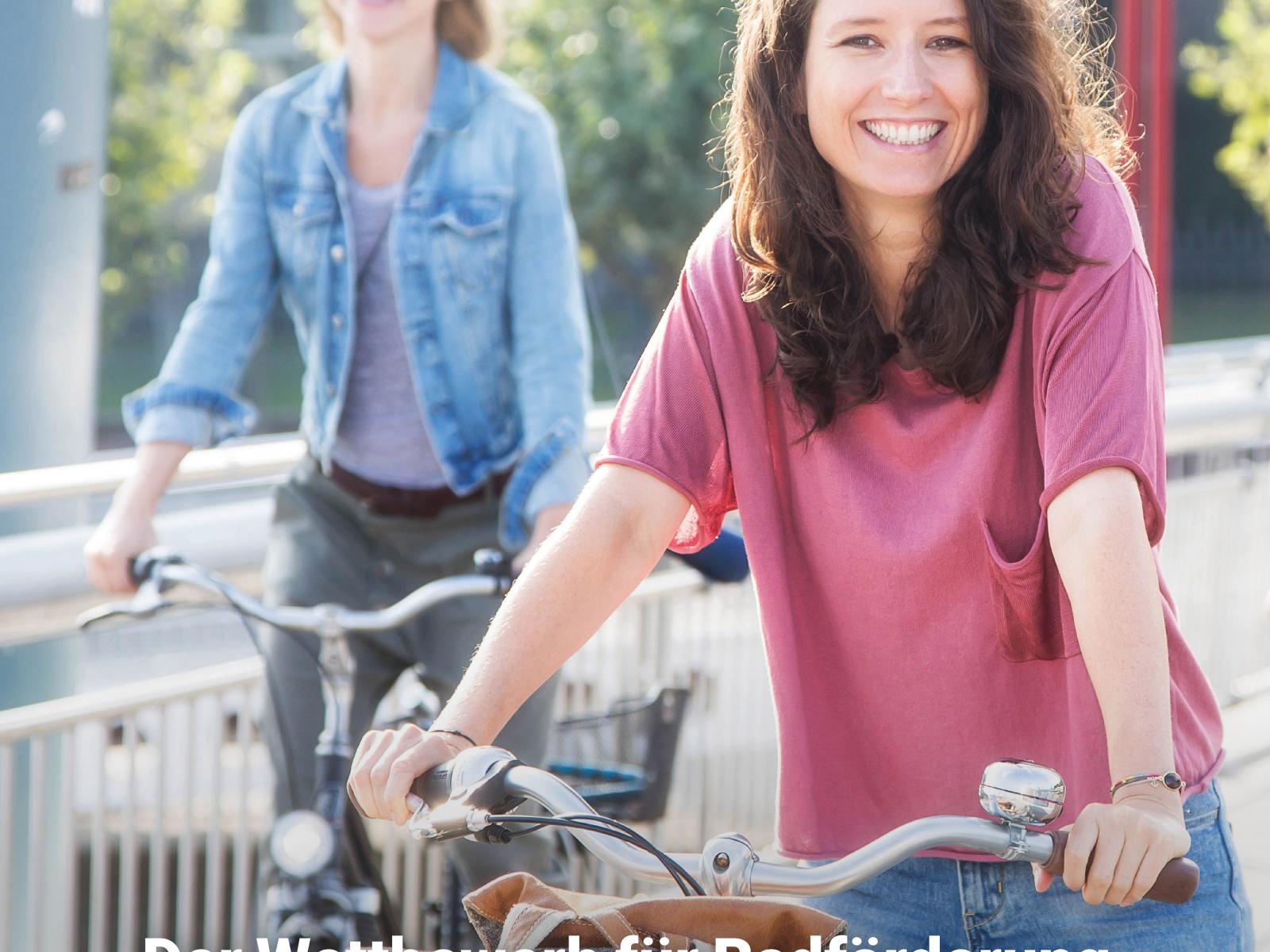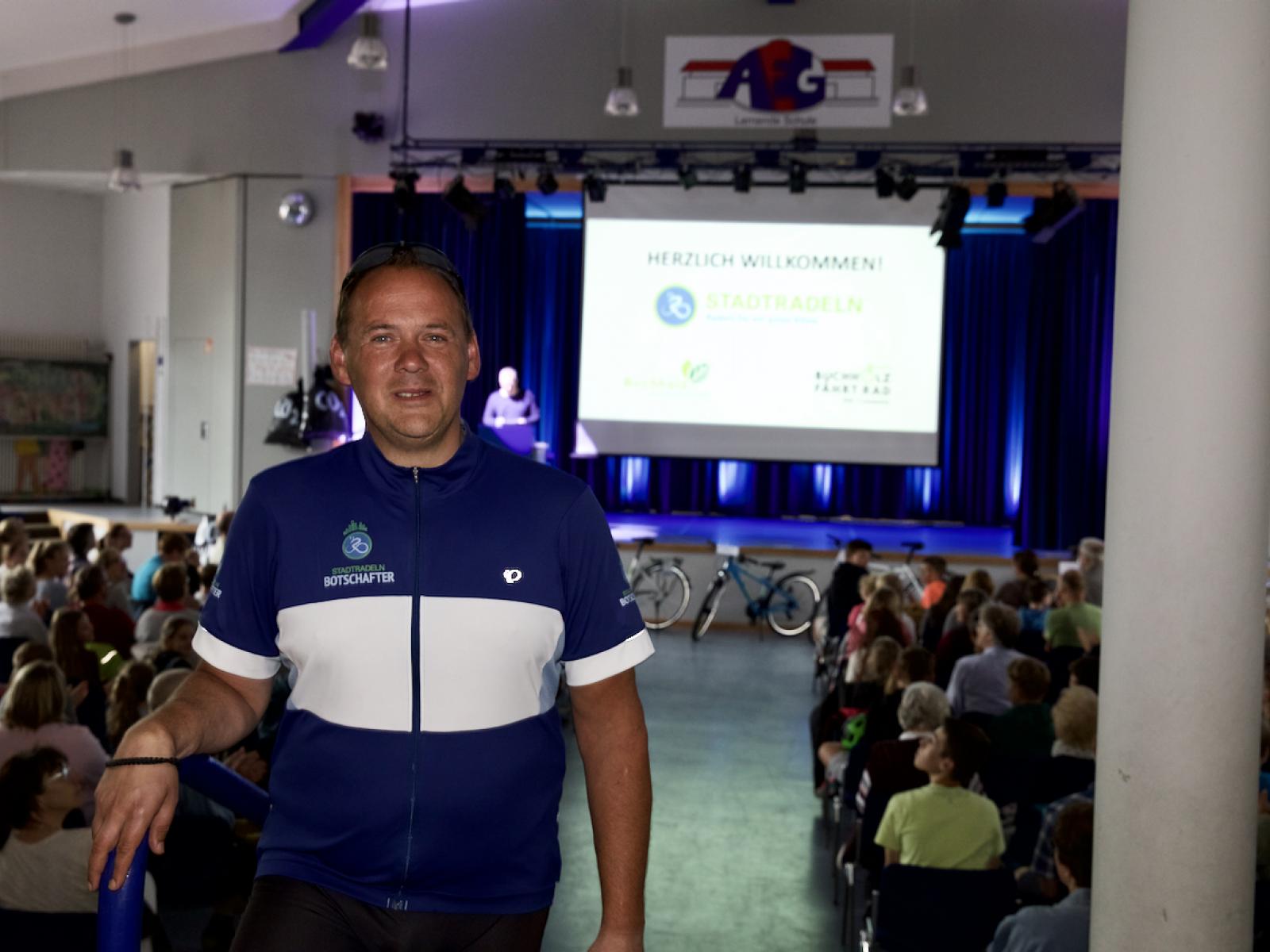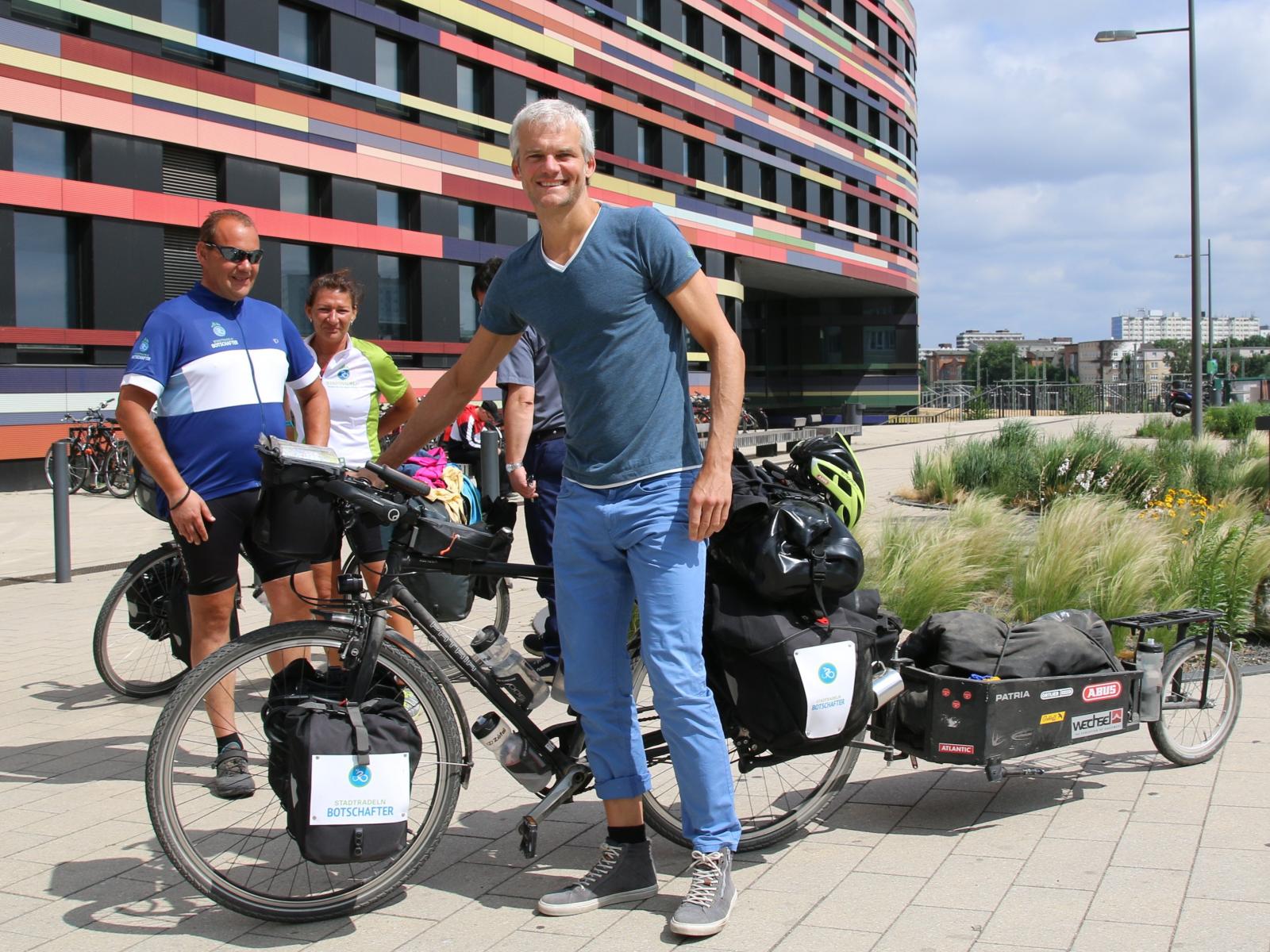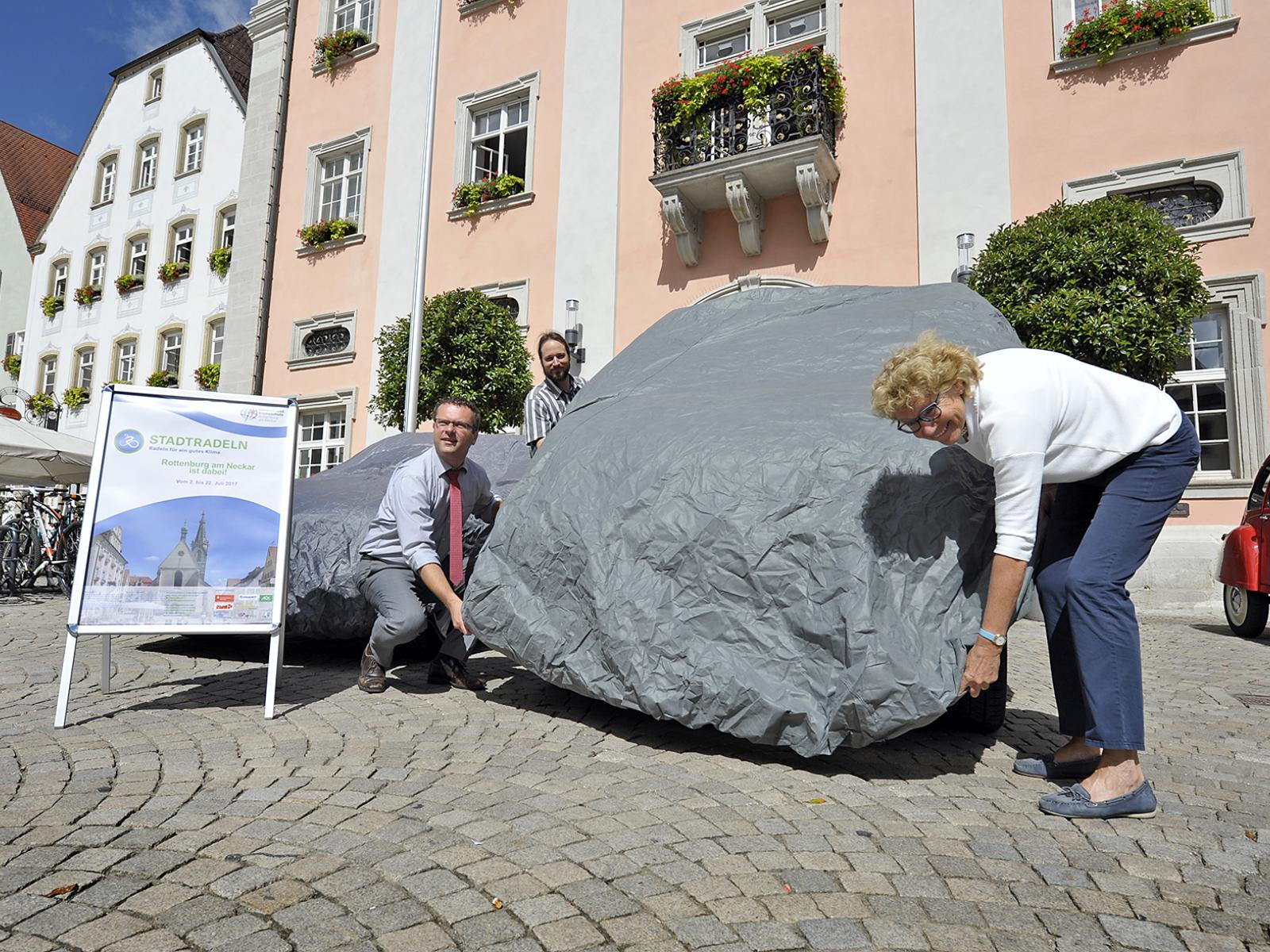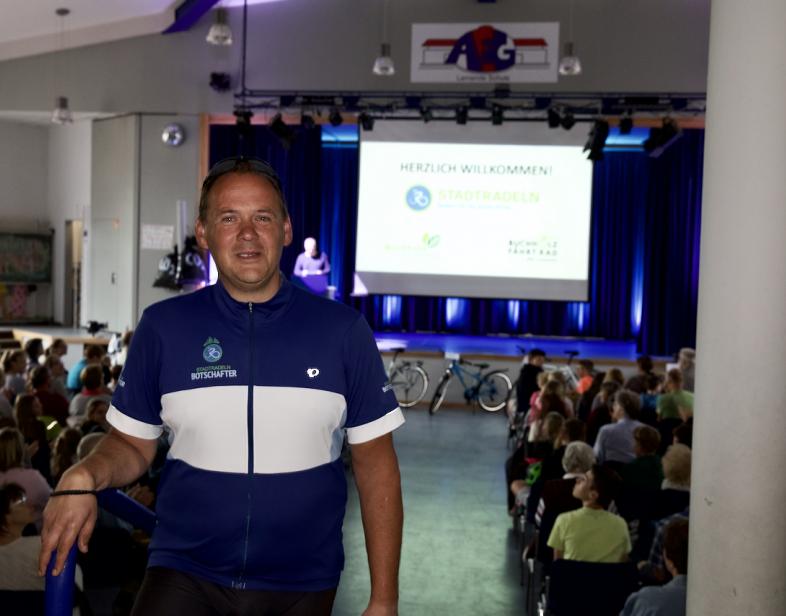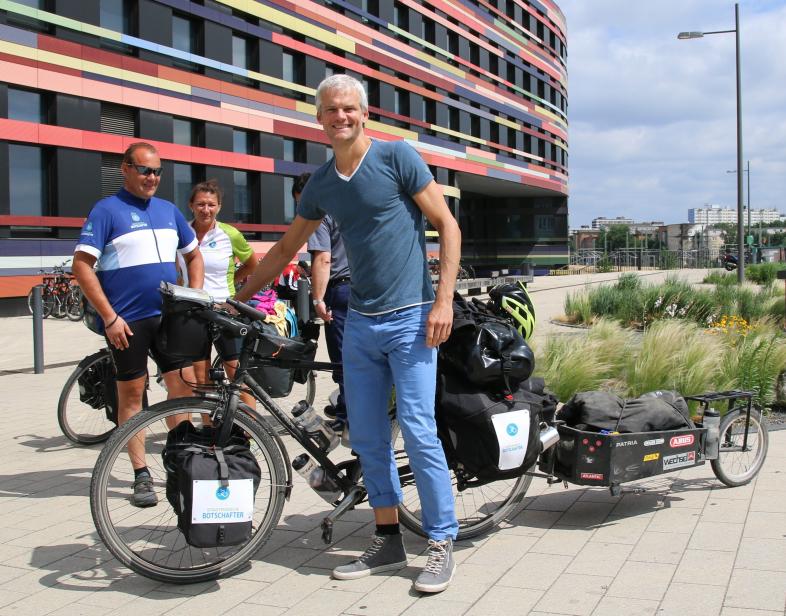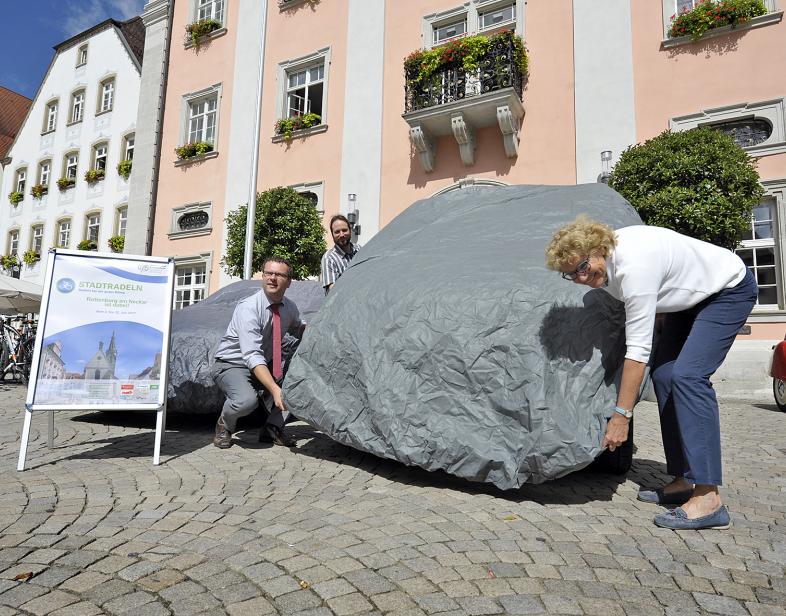An Overview Of Our Solution
The CITY CYCLING campaign is about getting as many people as possible on their bikes in their everyday lives.
A competition between municipalities, it promotes cycling as a means of climate action. Each year, city councils, groups of residents and entire municipalities compete against one another by forming teams and cycling as many kilometers as possible. Each participating municipality decides on a 21 day period between 1 May and 30 Sep to run the campaign. Participants log their mileage and both the current rank and the final result of each participating team and municipality are published online. This makes comparison between teams within a municipality as well as between different municipalities possible, pushing participants to go the extra mile!
Municipalities can use the RADar! reporting platform for residents to improve their cycling infrastructure.
- Population Impacted: about 280,000 people
- Continent: Europe
Last name
Organization type
Context Analysis
In 2015, about 22% of the EU’s total CO2 emissions were transport-related and of these, about 44.5% were car-related. In Germany, about 18% of emissions (160 million tons) are generated in traffic. Of this, 61% results from cars alone and urban traffic accounts for 25% of all traffic-related CO2 emissions. If only 30% of trips up to 6 km in inner city areas were made by bike instead of car, some 7.5 million tons of CO2 could be avoided.
There is plenty of potential for increasing the proportion of cycling in the transport mix. The Mobility in Germany 2017 study shows that around 78% of respondents own a bicycle but only 11% of all journeys are made by bike and only 50% of the cyclists surveyed are satisfied with the traffic situation at their place of residence. The survey also shows that, where good cycling infrastructure is offered, it is also used. Active efforts to improve cycling infrastructure can thus make a significant contribution to climate action.
Describe the technical solution you wanted the target audience to adopt
To reduce car traffic and to encourage people use their bicycles in their everyday lives, it helps to experience the many advantages of cycling first hand. This is CITY CYCLING’s main approach. Well-developed and safe cycling infrastructure locally also helps facilitate the switch from the car to the bicycle. CITY CYCLING’s second aim is thus to prompt municipalities into action and, in particular, to gain the support of municipal officials for cycling issues. City councilors and community representatives can serve as better role models, promoting cycling and working to improve cycling infrastructure if they cycle themselves. For those who rarely hop on their bikes, CITY CYCLING gives the needed push so that they can experience their municipality first-hand from a cyclist’s perspective during the competition and to discover the advantages to incorporating cycling into their everyday lives.
Type of intervention
Describe your behavioral intervention
CITY CYCLING uses gamification to get people involved and expose them to the many advantages of cycling. Cycling in teams encouraging social interaction during the campaign and creates social incentives to use the bike while having fun and staying motivated.
The campaign duration was set for 21 days as this is a manageable time period that is also long enough to allow people to (re)discover cycling as a comfortable, reliable and fast way to be mobile. Participants experience not only the thrill of the competition but also the fun cycling can bring – the fresh air and invigoration as well as the feeling of freedom and flexibility. The campaign thus also works with emotional appeals to encourage people to switch from the car to their bikes. The yearly repetition of the campaign strengthens this effect.
By getting actively involved in the campaign, municipal staff gain a tangible interest in improving local cycling conditions. Municipalities can use the campaign to promote cycling and show what they are already doing to improve the local cycling conditions. The optional RADar! reporting platform gives even more prominence to the topic locally by encouraging resident engagement in local planning and enabling an intensive and inclusive exchange on the needs of the people using bikes in the city.
Results such as participation rates and kilometers cycled are recorded annually. They show impressive growth over the last decade (see results).
As needed, please explain the type of intervention in more detail
For the public and local politicians alike – CITY CYCLING focuses on the switch from the car to the bike as something positive for your well-being as opposed to a sacrifice in the name of the climate.
Since ensuring that cycling is a positive experience requires the proper infrastructure, CITY CYCLING also directly addresses local politicians. It allows these decision-makers to get in touch with the cycling realities in their communities, see where improvements are needed and implement them thereafter. CITY CYCLING thus rewards the most active municipalities as well as the most active city councils. Elected officials are incentivized to get on the bike themselves and make their city look good. In so doing, they may also discover the benefits of cycling.
Describe your implementation
CITY CYCLING uses gamification to get people on their bikes for the climate. The campaign’s consistent and impressive growth over the last ten years is proof enough that CITY CYCLING is making a difference (see results). One enabler for this success is certainly the fact that many cities are in the process of reforming their transport sector in order to increase sustainability. CITY CYCLING helps deliver reliable cycling statistics and a cycling-friendly political climate that can help municipalities shape their local policies. Many state ministries also support their cities with funding programs to (partially) cover the entry fees.
As CITY CYCLING is a ready-made campaign that comes with easily adaptable materials including flyers, a variety of campaign elements, and communication concepts, it only takes one cycling enthusiast in a city administration to get the campaign started. Municipalities also benefit from the necessary IT-infrastructure and a help desk that we provide. Climate Alliance connects with (media) partners and sponsors, does PR for the campaign and cycling in general, and organizes central campaign events including an awards ceremony at the end of every CITY CYCLING season. The ease of the campaign is complemented by its intrinsic appeal to local media: CITY CYCLING takes place locally. Both local and regional media take advantage of it to report on sustainable mobility.
The campaign is not without obstacles. This year, its impressive growth led to an overloaded server. Server capacity this needed to be adjusted mid-campaign. Some municipalities have also cited the need to promote the campaign in new ways each year to keep interest high. We thus encourage exchange on communication strategies and PR-activities, publishing these ideas in documents for all participating municipalities.
External connections
The local politicians responsible for concrete decision-making in local cycling and traffic policy are of course key CITY CYCLING partners and are also directly involved as a target group of the campaign. Cycling organisations and companies in the cycling industry (Bosch, ABUS, Ortlieb) are also important to the campaign’s success and in Germany, where the campaign is most established, further partners include the German Federal Ministry of Transport and Digital Infrastructure, nine German state ministries and 14 regional cycling organizations.
Cycling is not only a key environmental issue but also very relevant for urban development. CITY CYCLING addresses this by involving local politicians and administrations. Cycling plays a large role in making cities safer (traffic), healthier (air pollution) and greener (bike traffic and infrastructure requires far less space than needed for cars). These points make cities not only more liveable but also reduce public costs in terms of traffic jams, accidents, air pollution, urban sprawl and more.
Cycling is a cross-cutting theme that speaks not only to the environmental conscious, but also groups such as the health conscious and bike enthusiasts. Even unexpected target groups such as major car companies regularly form teams and participate in CITY CYCLING.
Who adopted the desired behaviors and to what degree?
CITY CYCLING was first launched in 2008 and has shown impressive growth over the years. In the first CITY CYCLING season, 1,813 cyclists (among them 264 members of local parliaments) from 23 municipalities cycled a total of 340,523 km. In 2018, as of August, more than 234,000 cyclists (among them 3,661) members of local parliaments) from over 850 municipalities have cycled over 48,000,000 km with more expected by the season’s end in September (you can find an overview of all CITY CYCLING seasons on our website www.city-cycling.org/results and as photo attached to this application).
The RADar! reporting platform is also quite popular among the municipalities. Since RADar! was launched in 2014, nearly half of all participating municipalities were also making use of RADar! (135 in 2014, 170 in 2015, 227 in 2016, 279 in 2017 and 346 in this year’s ongoing season).
How did you impact natural resource use and greenhouse gas emissions?
Kilometers cycled can be converted into CO2 emissions avoided as opposed to travel by car. According to the German Federal Environmental Agency, each cycled kilometer equates to 142g CO2 avoided. This year alone, CITY CYCLING has already avoided some 6,900,000kg of CO2 emissions.
Planning for cars requires more space than for bicycles. As an example, we can look to the number of bikes that can fit in a car parking lot. While cars have the capacity to carry more than one person, their typical capacity averages to be less than 1.5 people per car and trip. The space saved by cycling can be put to other uses – a big plus given the enormous pressure cities face to provide green spaces. The space saved by cycling can also result in natural resource protection through avoided soil sealing, forest clearing or natural habitat loss.
Cycling thus reduces air pollution and the emission of greenhouse gases while helping to preserve natural resources through decreased urban expansion for transport
What were some of the resulting co-benefits?
In terms of community and social aspects, cycling can bring improved health and well-being. Within cities, cycling allows for more flexible mobility and increased social interaction (travel by bike is less anonymous than by car). The space saved by investing in biking as opposed to car infrastructure can be used for parks, public squares, urban gardens and other common spaces, which help make cities more liveable and less anonymous. Reduced car traffic also makes cities safer. With our reporting platform RADar!, municipalities can easily combine transport and urban development policy with citizen participation.
In terms of the economic sector, increased bicycle traffic means reduced infrastructure costs as opposed to car infrastructure as well as more urban space, safer traffic and lower pollution levels. All these aspects go hand in hand with a reduction in public costs, allowing the money saved to be used elsewhere.
Sustainability
CITY CYCLING is funded by an entry fee per participating municipality. The fee is relatively small and dependent on the city’s size, ranging from a minimum of €330 to a maximum of €3,300 – Climate Alliance members also get a discount of 50%. In Germany, the state ministries of more than half of all German federal states cover the participation fees either in total or in part. In terms of personnel, a minimum one person per CITY CYCLING municipality is needed to carry out activities as a campaign manager and contact point for the cyclists.
Return on investment
The above are fixed costs each municipality must pay. Everything beyond that is voluntary and dependant on how much effort a city wants to invest in the campaign. Climate Alliance provides easily adaptable PR-materials and a ready-made campaign concept that make CITY CYCLING less expensive and easier to put into action on a local level.
In Copenhagen, a study by Lund University compared the societal costs of travelling by car and by bicycle. The results show that every kilometer by car costs society €0.15, while society earns €0.16 for every kilometer cycled. Based on these numbers, CITY CYCLING has potentially earned society a total 31 million euros (nearly 195 million kilometers cycled) since its launch in 2008!
How could we successfully replicate this solution elsewhere?
Replication of this Climate Alliance campaign is inherent in its concept: the participating municipalities replicate CITY CYCLING at the local level and at any necessary twists to it. That said, CITY CYCLING is also being replicated in other countries and languages. The platform is currently available in English, French (only in Luxemburg) and German but can be translated into numerous other languages – a translation into Portuguese is already ongoing. CITY CYCLING can also be used by municipalities worldwide as it is. In Luxemburg, about 50 municipalities take part. We also have municipalities in Brazil and Switzerland participating. Further municipalities in Austria, France, Spain, Great Britain and the Czech Republic have also expressed their interest in getting involved.
